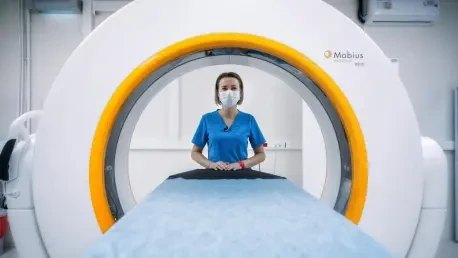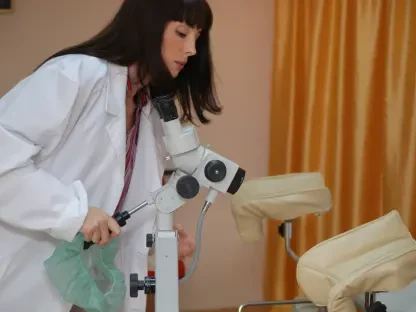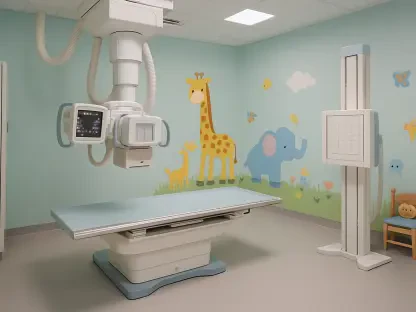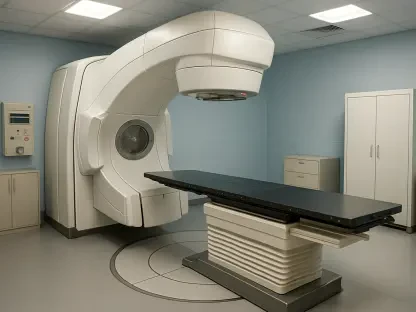In the ever-evolving landscape of healthcare, the integration of artificial intelligence (AI) into medical diagnostics has brought about significant advancements, particularly in radiology. The focus has been on improving the efficiency and accuracy of radiology reporting, a critical component of patient care, especially with methods like X-ray imaging. Healthcare institutions have continuously sought ways to streamline the radiology reporting process, balancing the need for quick, precise interpretations with the increased workload faced by radiologists. Through a noteworthy development in Illinois, a generative AI model was developed to create initial drafts of radiology reports, particularly for X-ray images. This landmark integration signifies a transformative step forward, shedding light on the potential of AI to innovate medical practices.
Advancements in AI-Driven Radiology Reporting
Enhanced Efficiency Without Compromising Quality
Radiology reporting, a cornerstone in effective healthcare delivery, often demands considerable time and expertise from radiologists. The advent of AI tools has introduced a paradigm shift in this domain, offering a significant reduction in reporting times. Northwestern Medicine’s deployment of a generative AI model marked a pioneering instance, with the AI system generating initial drafts of reports, subsequently refined by radiologists. This innovative approach resulted in an average increase in documentation efficiency by 15.5%, while ensuring the diagnostic accuracy wasn’t compromised. The ability to save over 63 hours in a span of months emphasizes the profound impact AI can have, lowering the number of shifts required by radiologists and addressing time constraints within healthcare settings.
This AI implementation showcases the harmonious blend of human oversight and technological advancement. It allows radiologists to focus on critical-thinking aspects of diagnostics, improving the overall workflow. The collaboration between AI and radiologists is essential, providing a necessary checkpoint to maintain high-quality patient care. In addressing the issue of radiologist shortages, AI tools present a valuable resource by alleviating the administrative burden, thus allowing medical professionals to direct their expertise where it is most needed. The optimal combination of speed and quality in AI-assisted report generation showcases a promising future in AI-driven diagnostics.
Versatility Across Various Imaging Modalities
A significant achievement of Northwestern Medicine’s AI model is its application across diverse anatomical sites, unlike its predecessors. While many AI systems are specifically designed for chest X-rays, this model expands its utility to include the abdomen, pelvis, spine, and extremities. This broad applicability underscores the model’s flexibility and further advances the shift toward more integrative diagnostic tools in the medical field. Encompassing 18.3% of non-chest radiographs, the AI’s versatility is a notable breakthrough in radiology, setting a new standard for AI adaptability in clinical practices.
The robustness of the AI system is demonstrated through rigorous evaluation processes that ensure the quality of AI-assisted documentation. The parity in error correction rates—wherein reporting inaccuracies are rectified through addenda—between AI-assisted and traditional methods speaks volumes about the system’s reliability. Peer-reviewed analysis on a large scale has validated the clinical accuracy and text quality, further consolidating radiologists’ capabilities to preserve high documentation standards with AI support. The dedication to upholding excellence in patient care while integrating AI technology highlights its promising role in the healthcare domain.
Potential Life-Saving Applications
Rapid Detection and Prioritization
Beyond enhancing the efficiency and accuracy of documentation, generative AI models also show promise in detecting and prioritizing unexpected life-threatening conditions. The AI system applied in practical settings has demonstrated notable success in flagging emergencies such as pneumothorax. It achieved a sensitivity rate of 72.7% and a specificity of 99.9%, rapidly alerting medical personnel faster than conventional methods. This swift prioritization capability is crucial for timely clinical decision-making, facilitating prompt patient management in critical situations.
AI’s role extends beyond mere automation, actively contributing to life-saving interventions by providing expedited alerts for conditions requiring immediate attention. Its efficient system can potentially redefine clinical workflows, reducing response times and improving overall patient outcomes in emergency settings. With medical professionals still spearheading the decision-making process, AI serves as an invaluable augmentation, highlighting its purpose as an analytical tool rather than a complete replacement for human expertise.
Broader Impacts on Medical Fields
The integration of AI in radiology sets the stage for broader applications across various medical fields. The potential for generative AI tools to extend beyond X-rays to modalities like CT, MRI, ultrasound, and PET scans promises a revolutionary transformation in diagnostic practices. This expansion also paves the way for AI applications to be explored in areas such as ophthalmology and dermatology, offering new opportunities to elevate healthcare delivery standards. The optimistic outlook underscores AI’s transformative role in enhancing medical imaging and diagnostic procedures.
AI’s ability to adapt and improve continues to garner support and intrigue within medical circles, anticipating widespread adoption across healthcare domains. The collaboration between AI systems and medical professionals heralds a future where healthcare accessibility and quality are augmented, especially in areas experiencing resource constraints or professional shortages. As AI technologies mature, the potential to revolutionize patient care grows exponentially, cementing AI’s role as a vital asset in advancing healthcare services.
Collaborative Future of AI and Radiology
Radiology reporting is crucial in healthcare, often demanding significant time and expertise from radiologists. The rise of AI tools has introduced a transformative change, significantly reducing reporting times. For example, Northwestern Medicine pioneered using a generative AI model to draft initial reports, which were later polished by radiologists. This innovative approach increased documentation efficiency by 15.5% without compromising diagnostic accuracy, saving over 63 hours in a few months and reducing the number of shifts needed, highlighting AI’s profound impact on healthcare.
The implementation demonstrates the harmonious blend of human oversight with technological advancement, allowing radiologists to concentrate more on critical-analysis tasks, thus enhancing workflow. This collaboration between AI and radiologists is indispensable for maintaining high-quality patient care. AI tools significantly address administrative burdens, providing a crucial resource amid radiologist shortages. Ultimately, the synergy of speed and precision in AI-assisted report generation paves the way for promising advancements in AI-driven diagnostics.









